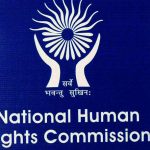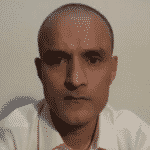The Chief Justice of India T.S. Thakur has repeatedly expressed concern about the chronic shortage of judges and questioned the delay on the part of the Executive in filling up vacancies in the high courts.
Over 45 percent of the positions of High Court judges are vacant.
Background
- Supreme Court judgments in 1993 and 1998 gave rise to the Collegium of the five senior-most Supreme Court judges, who exercised the supreme power of appointment to the judicial ranks.
- The judgments provided for a consultative process between the Executive and the Judiciary, and for the government to return for reconsideration a name sent by the Collegium.
- However, the appointment had to be made if the Collegium reiterated its view.
- Essentially, the court had the last word.
- The methodology for consultation was contained in a Memorandum of Procedure (MoP) formulated in 1999.
- In April 2015, the Government brought in the National Judicial Appointments Commission (NJAC) Act.
- It was widely seen as an attempt to break down the Judiciary’s monopoly by placing the Law Minister and two ’eminent persons’ (in whose choice the Judiciary had a minority vote) at the deciding table, along with the Chief justice of India (CJI) and his two senior-most colleagues.
- The Supreme Court in October 2015 struck down the NJAC Act and the 99th Constitutional Amendment which envisaged a role for the Government in the appointment of judges to the highest courts.
- The Constitution bench that invalidated the laws relating to the NJAC conceded that the Collegium process requires improvement.
- As a compromise it was agreed that the Government would draft a revised MoP on appointment of judges which would address the concerns of the Government and Legislature.
Draft MoP ( which outlines the modus operandi to be followed in appointment of judges).
- It seeks to “widen the zone of consideration” to reduce arbitrariness as well as nullify perceptions of favoritism in making judicial appointments and transfers.
- Greater transparency is sought to be introduced through a process of vetting by screening committees at the high court and Supreme Court levels.
- It envisages a permanent secretariat for the collegium to gather and scrutinize data relating to prospective appointees.
- It lays down a judicial mechanism for redress of complaints against judges.
- It wants all Supreme Court and High Court judges to be able to recommend names to their respective Collegiums.
- Chief ministers should also have the right to recommend names to the respective high Court collegiums.
- The Attorney General should be allowed to recommend the names of judges to the Supreme Court at the Centre and Advocate General of States to their respective state High Courts.
- The Government has asked the Judiciary to fix an age for High Court judgeship and make it non flexible.
- The draft is currently with the CJI and awaiting his approval.
Reasons for delay
- It is known that the Government wants to incorporate in the Memorandum of Procedure for appointment of judges, the power to reject recommendations from the Collegium on the ground of ‘national interest’ , whereas the Judiciary opposes such a veto clause.
- The clause gives primacy to the Government on appointment of judges unlike the current practice where the government is bound to accept a recommendation by the Collegium if a recommendation is sent again.
- The revised MoP further provides that once the Centre has rejected a recommendation, it will not be bound to reconsider it even after reiteration by the Collegium.
What needs to be done
- It is the Government’s duty to dispel the impression that it is deliberately going slow or that it is indirectly giving vent to it’s own frustration after its plan to establish NJAC was thwarted by the court.
- Practical solutions can be found if the two branches come together. It is a matter which requires a good deal of consultation and cooperation, any confrontation between the Judiciary and the Government will be injurious to the public interest.
- The Attorney General could take the lead in meeting both sides, formulating and reformulating proposals.
- Else, the Law Minister, with necessary authority, could engage with the judges.
- The Prime Minister can take the lead to invite the CJI and senior judges for a discussion.
- Even the President can be proactive in bringing the heads of the two institutions together.
- If the above methods are not successful, the Supreme Court should consider recalling its order permitting the Government to draft the revised MoP, and to undertake the task itself.











